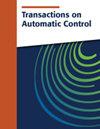通过插值和张量分解来简化子空间投影模型
IF 7
1区 计算机科学
Q1 AUTOMATION & CONTROL SYSTEMS
引用次数: 0
摘要
非线性模型降阶研究表明,随着非线性的增加,捕获主导信息的子空间需要更复杂的基。复杂度主要受系数和近似准则两个因素的影响。一方面,它受各系数特性的影响。因此,我们首先引入一种基于广义gramian的估计特征值衰减的方法,该方法证明了降阶上的因素。另一方面,现有的基于传递函数的插值条件必须匹配多个不同基的特征。本文证实了核函数作为一种新的准则,可以用与线性部分相同的基来匹配一类非线性系统的所有特征。我们提出了一个$\mathit{k}$维的精细空间用于仿射输入/输出非线性系统,而现有的方法需要至少$\mathit{O(nk)}$维的空间来匹配$\mathit{n}$传递函数在$\mathit{k}$插值点,即使是$\mathbf{0}$矩匹配。为了扩大其适用性,我们提出了一个秩-$\mathbf{R}$二次逼近,将一般系统转化为归一化仿射输入/输出非线性系统。在计算效率方面,我们提出了一种并行的偏列最小二乘方法来进一步降低秩。最后,给出了两个数值算例来说明本文方法的有效性。本文章由计算机程序翻译,如有差异,请以英文原文为准。
Refined Subspace Projection for Model Reduction via Interpolation and Tensor Decomposition
Research on nonlinear model order reduction has revealed that as nonlinearity increases, the subspaces capturing dominant information require more complex bases. The complexity is influenced by two main factors: coefficients and approximation criteria. On one hand, it is affected by the characteristics of all coefficients. Therefore, we begin by introducing a generalized Gramian-based method for estimating eigenvalue decay, which demonstrates the factors on the reduced order. On the other hand, existing interpolation conditions based on transfer functions must match multiple features with different bases. This article confirms that kernels, as new criteria, can match all features of a large class of nonlinear systems using the same basis as the linear part. We propose a $\mathit{k}$ $\mathit{O(nk)}$ $\mathit{n}$ $\mathit{k}$ $\mathbf{0}$ $\mathbf{R}$
求助全文
通过发布文献求助,成功后即可免费获取论文全文。
去求助
来源期刊

IEEE Transactions on Automatic Control
工程技术-工程:电子与电气
CiteScore
11.30
自引率
5.90%
发文量
824
审稿时长
9 months
期刊介绍:
In the IEEE Transactions on Automatic Control, the IEEE Control Systems Society publishes high-quality papers on the theory, design, and applications of control engineering. Two types of contributions are regularly considered:
1) Papers: Presentation of significant research, development, or application of control concepts.
2) Technical Notes and Correspondence: Brief technical notes, comments on published areas or established control topics, corrections to papers and notes published in the Transactions.
In addition, special papers (tutorials, surveys, and perspectives on the theory and applications of control systems topics) are solicited.
 求助内容:
求助内容: 应助结果提醒方式:
应助结果提醒方式:


